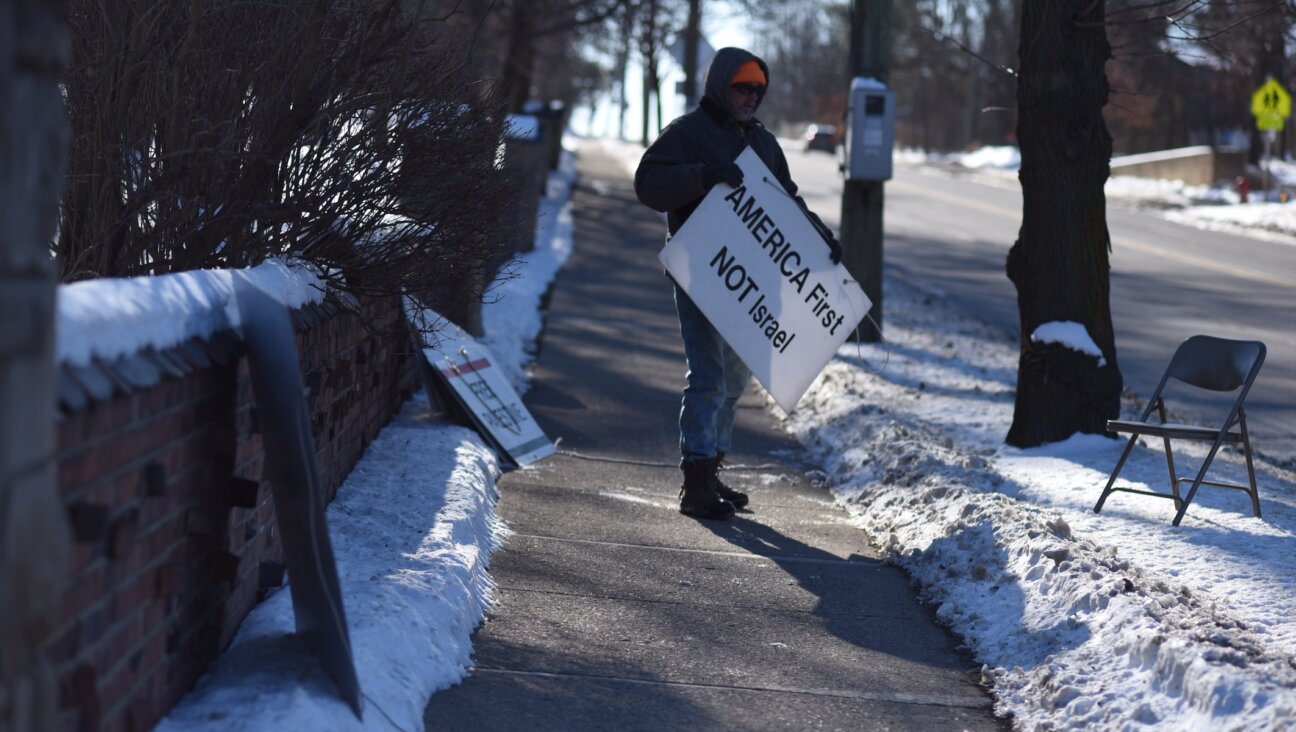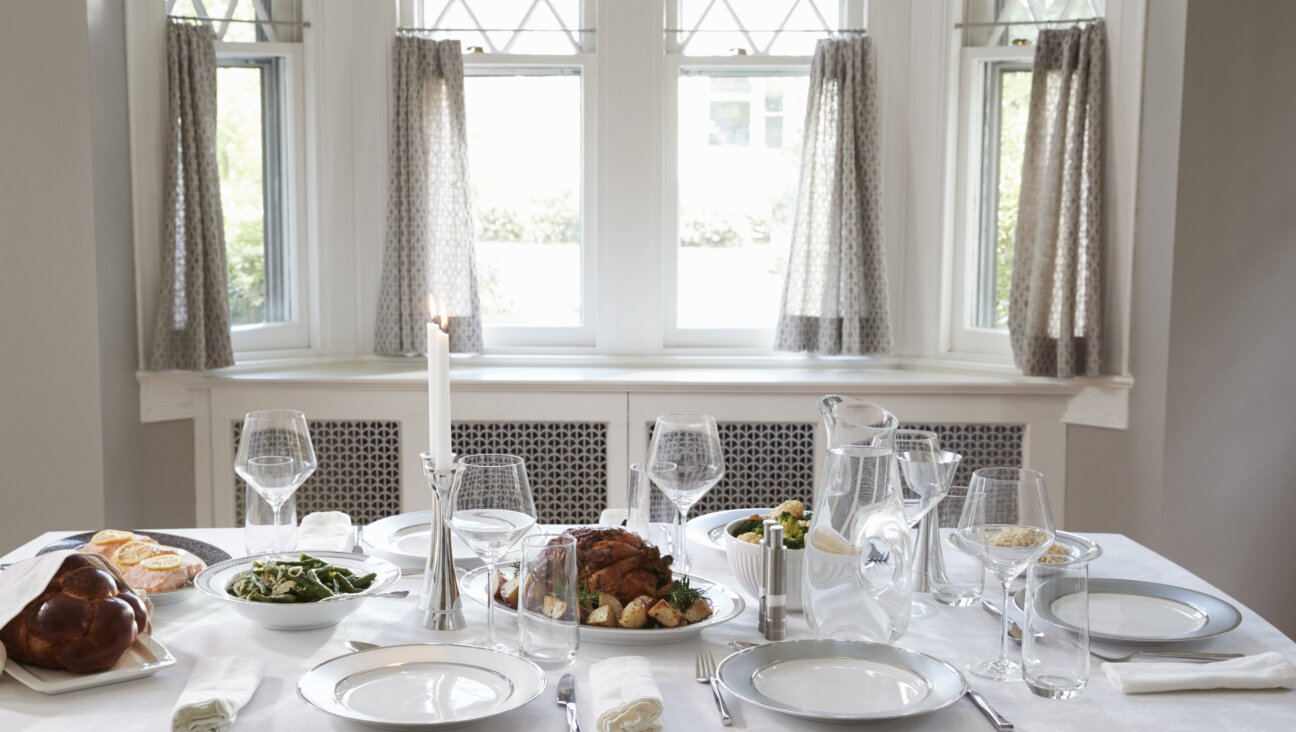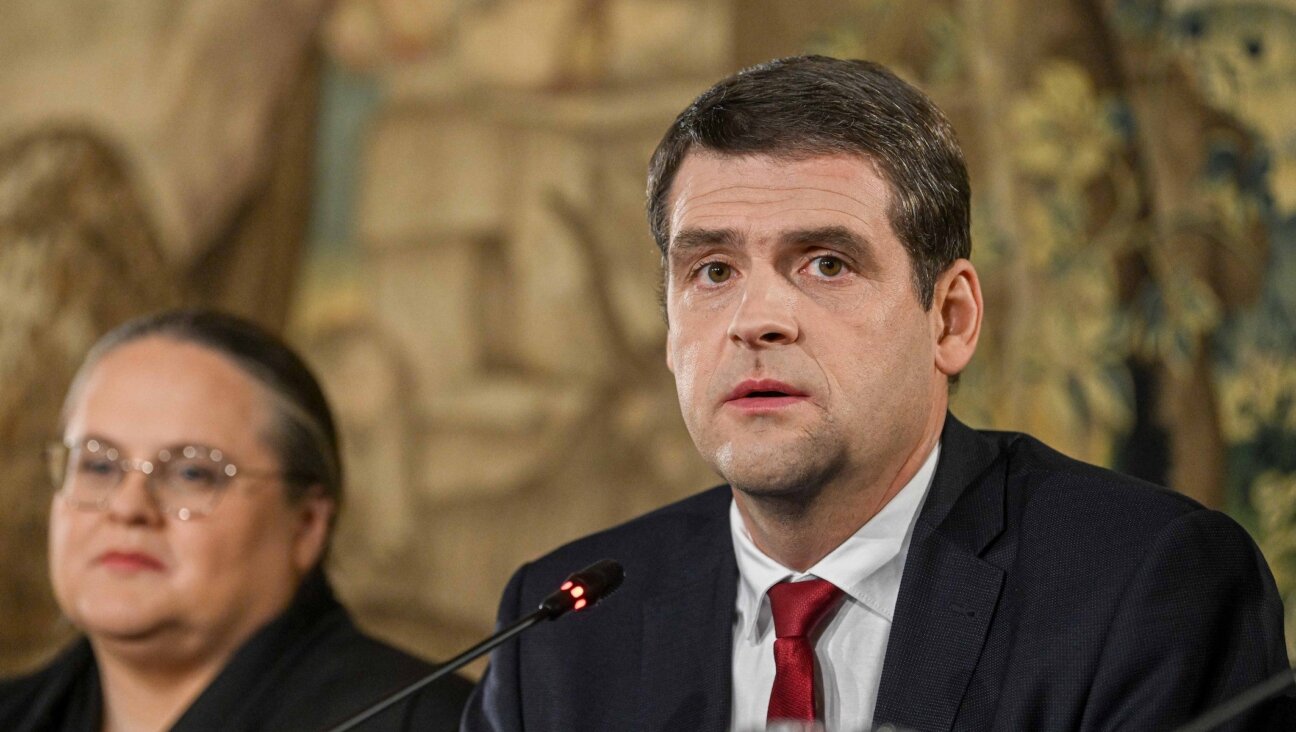Big Love, Jewish-Style: One Divorce, Two Marriages, Lots of Questions
Yehuda Semel has two wives — at least according to the laws of New York State.
Semel, of Brooklyn, married his second wife in a religious ceremony over the summer. The wedding took place about two years after Semel and his first wife signed a get, or a bill of Jewish divorce. But since civil divorce proceedings are ongoing, Semel didn’t obtain a civil marriage license for his recent wedding.
An Orthodox Jew, Semel sees the second marriage as a religious union without a civil component. “I’m married in the eyes of God,” he said of his second marriage. “I’m not married legally.”
But New York State laws don’t recognize such a distinction, making Semel’s second wedding a rare example of an illegal American Jewish religious ceremony. Clergy can be punished with up to a year in prison for performing a marriage for a couple that they know to be ineligible to be wed civilly.
In effect, New York State doesn’t differentiate between a religious marriage and a civil marriage. The result is a situation, illustrated in the Semel case, in which Jewish law and civil law are at odds in a way that some say provides needed safeguards against abuse, and others say is an abrogation of religious freedom.
“When there is this other family competing for the resources, it’s a clear breeding ground for abuses and exploitation of the existing family’s rights,” said Joyce Semel, Yehuda’s first wife. “It just complicates things exponentially.”
Legal experts say that the New York State law that was broken by the rabbi who performed the marriage between Yehuda Semel and Rivky Jodlo is not enforced. And while lawyers differed on whether Semel could technically be charged with bigamy, which carries a penalty of up to four years in prison, it remains highly unlikely that a prosecutor would pursue a bigamy charge in a case like this one.
But the fact that performing a religious marriage ceremony can be illegal in New York State does not sit easily with Rabbi J. David Bleich, a professor of Jewish law and ethics at Yeshiva University’s Benjamin N. Cardozo School of Law and a rosh yeshiva, or academic head, at Rabbi Isaac Elchanan Theological Seminary, Yeshiva University’s rabbinical school.
“I think it’s a violation of the First Amendment,” Bleich said. “If the state’s telling me that I can’t make a brucha” — or a blessing — “then something strange is going on here.”
“I call that a violation of religious freedom, a violation of the religious exercise clause,” he said, referring to the clause in the First Amendment of the U.S. Constitution that guarantees free exercise of religion. He said that he would perform a marriage like the one between Semel and Jodlo, calling it an act of civil disobedience.
Divorce proceedings between Joyce and Yehuda Semel began in 2005. Joyce initially declined to sign a get, leading rabbis representing Yehuda to threaten in 2006 to prepare a heter meah rabbonim, a Jewish legal document that requires the signature of 100 rabbis and replaces a get in instances when a wife cannot or will not sign. Instead, the couple consented in September 2008 to sign a Jewish divorce agreement. But civil divorce proceedings continue, and the couple is still married, according to state law.
The religious ceremony that united Semel and Jodlo took place at the Queens, N.Y., home of Rabbi Ephraim Bryks. A controversial figure who resigned in 2003 from the Rabbinical Council of America, Modern Orthodoxy’s rabbinic umbrella group, Bryks had been advising Yehuda Semel on his divorce. Yehuda Semel said that a different rabbi officiated at the ceremony, though he wouldn’t provide a name.
Bryks would not comment for this story.
Semel, whose faith prohibits him from cohabitating with a woman prior to marriage, said that he had no choice but to marry Jodlo. “I’m 52 years old,” he said. “What am I supposed to do with my life? I met a girl whose biological clock is ticking.”
His estranged wife disagrees. “We have an existing situation that needs to be resolved first,” Joyce Semel said.
She said she’s worried about money that might go to her and her children being diverted to support Semel’s new family. “We have children that are existing,” she said.
The religious marriage set off a controversy within the Semels’ community. The Yavneh Minyan of Flatbush, of which Yehuda Semel is a member, published an announcement of the Semel-Jodlo marriage in its newsletter — a decision the synagogue president says that he now regrets.
Rabbi Moshe Sokol, rabbi of the congregation and dean of the Lander College for Men at Touro College, wrote in an e-mail to the Forward that he opposed religious marriage ceremonies for those without a civil divorce, and that he had advised Yehuda Semel against the second marriage. He said that since the question of announcing the marriage in the synagogue newsletter was not a matter of religious law, he left it up to the board.
Joyce Semel provided an e-mail to the Forward that she had sent to the RCA in July, complaining about the Yavneh Minyan’s announcement of the marriage.
At press time, RCA officials said they did not know whether any specific action had been taken on the complaint.
But Rabbi Moshe Kletenik, president of the RCA, condemned the practice of remarrying in a religious ceremony before a civil divorce has been granted. “It’s a given that rabbis are expected to abide by the law of the land,” he said.
Instances analogous to the Semel case are apparently rare, but not unheard of, in the Orthodox community. According to one rabbi, such religious ceremonies were common before a 1983 amendment to the Social Security Act preserved benefits for widows who remarried. Previously, widows would marry in religious ceremonies without civil marriage licenses, so that they could protect Social Security payments. The ceremonies were called shtile chupa — a Yiddish phrase that translates to “a quiet marriage.”
But both Bleich and Rabbi Michael Broyde, a professor of law at Emory University, said that the notion of a purely religious ceremony being illegal seemed to be unconstitutional. “It sounds like it’s a restriction on a religious freedom,” Broyde said.
That argument is plausible, if not widely accepted, said Joel Nichols, a law professor at the University of St. Thomas School of Law in St. Paul, Minn., and a senior fellow at the Center for the Study of Law and Religion at Emory. “The state here thinks it has given the authority to the rabbi to marry people or not, and Rabbi Broyde’s starting point is that the rabbi’s authority to marry people is inherent and it doesn’t derive from the state,” he said. “Right now, the majority pretty plainly falls against Rabbi Broyde.”
According to Nichols, the conflict between religious and civil marriage norms isn’t exclusive to the Jewish community; it exists in the Muslim community, as well, he said. “One of the next key steps in multiculturalism,” Nichols said, “is, how are we going to accommodate religious communities and their somewhat differing family laws?”
Contact Josh Nathan-Kazis at [email protected] or on Twitter @joshnathankazis
















